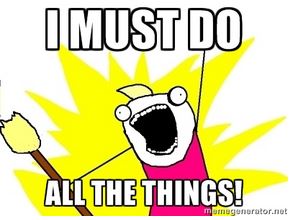Getting Things Done: the Art of Stress-Free productivity is the title of a book published at the very beginning of the last decade by David Allen, a personal productivity consultant and speaker based in Ojay, California. It has quickly become a best-seller and has rapidly drawn a huge following. It is now one of the classics of the personal productivity literature. The purpose of the GTD method is to help people becoming more productive by gaining control of their workflows. This is achieved by implementing a simple 5 stages process - “a phenomenal piece of mental artistry” in the late Marc Orchant’s words - which involves collecting, processing, organizing, review and doing. As an image is worth 1,000 words, the processing system has been elegantly synthesized in the now famous GTD Workflow diagram and more recently as a cool infographics, the GTD workflow map.A first basic principle is to be quite systematically collecting not only all the “stuff” coming into your life (letters, documents, emails, etc.) but also emptying your head and writing down everything that has your attention.It is then a matter of quite systematically processing all the inputs coming in your system. This triage process uses simple yet effective filters by asking three questions: “what is it?”, “is it actionable?” and if it is actionable, “what is the next action?” ; determining what is the next action is quite central to the whole system. A particularity of GTD is that anything involving more than one action is a project.Organizing involves using a very clear structure and “clear buckets”. Items which are not actionable are disposed of (trash), set aside to incubate (someday-maybe folder) or stored for future retrieval (reference materials). A simple system of lists and folders is used to keep track of actionable items (next actions, time sensitive items and events, “waiting for” items which have been delegated, as well as projects and projects support materials).Systematically reviewing the system on a regular basis is essential to the implementation of GTD. This involves reviewing constantly what Next Actions need to be executed, but also conducting ritual weekly reviews in order to process the in-box, take stock of all the open loops, Next Actions, projects, and keeping them aligned with one’s areas of responsibility and focus and your longer terms goals and vision.Finally, it is a matter of doing, for in the end this is all about Getting things DONE. A key here is that a lot of what will be involved will consist in predefined work, whilst keeping enough flexibility for being able to be responsive to what may come up and need immediate attention.If Getting Things Done is about becoming more productive, it is in no way a matter of simply keeping your nose to the proverbial grindstone, far from it. It also involves another dimension, alas for too often neglected or misunderstood, which helps taking things to the next level, by going beyond productivity and striving towards effectiveness. Gaining perspective is quite crucial to this end and the Getting Things Done method also involves a second framework, the six-levels of the horizons of focus. This is a matter of looking at your work bottom-up, starting from the ground up, from the runway, i.e. the Next Actions you need to accomplish, and rising progressively in order to get an eagle-eye view of what you are doing and would like to do in the future, right up to you life values at 50,000 feet. The six horizons of focus include:
50,000 feet : Life purpose
40,000 feet : vision of long-term success (3-5 years)
30,000 feet : one-to-two-years goals
20,000 feet : current areas of responsibilities
10,000 feet : current projects
Runway : current next actions
These six-levels allow you to map what you are currently doing to make sure that they are aligned with your goals and vision for the future, but also all importantly atoned with what you see as your Life purpose.Over the last eight years, practicing the GTD method has proven incredibly valuable to me. I would like in my next post to reflect on my experience of trying to make it all work and identify some of the recurrent challenges I have been confronted with, before looking at how Personal Kanban has helped me take my GTD implementation to the next level.







